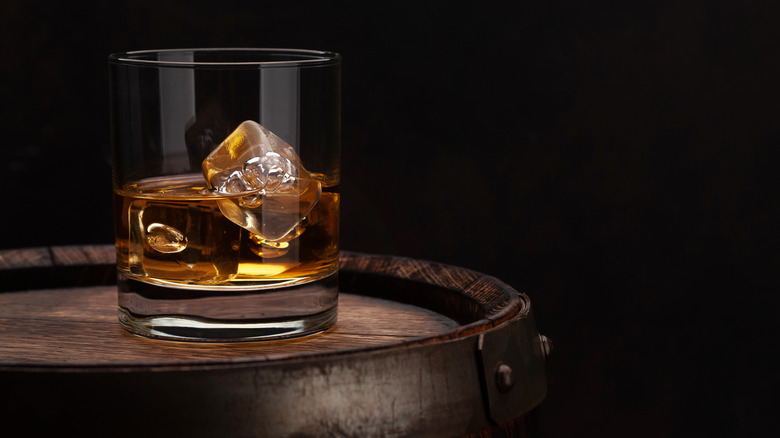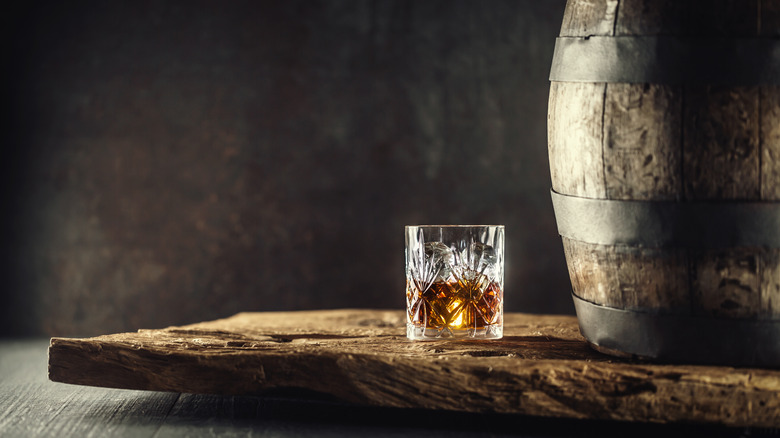The Simple Difference Between Single And Double Barrel Bourbon
What makes a bourbon is pretty straightforward. As a distinctly American spirit, by law, bourbon has to be made in the US, from a mash bill that contains at least 51% corn, and with no coloring or flavoring additives other than water. It must also be aged for at least two years in new, charred oak barrels, and be bottled between 80 and 125 proof. Standard barrel bourbons are blended from a variety of barrels, while small batch bourbons are blended from just a few barrels. If the bourbon comes from just one barrel, it's known as single barrel.
And while bourbon must be aged first in a new, charred oak barrel, there's nothing that says that once it has completed its legal requirements for aging that it can't be further aged in another barrel — and that is exactly what double barrel means, that the bourbon was finished in a second barrel, or double the number of barrels as compared to regular bourbon. And while the first instance of double barreling occurred by accident, these days, it's done on purpose, to enhance the flavor of the bourbon.
How double barreling affects a bourbon's flavor
In 1910, Old Forester, whose founder we can thank for first bottling bourbon, had a fire in their bottling line that prevented them from bottling a vat of matured bourbon. Rather than lose all the bourbon, they stored it in a second barrel, and discovered a "remarkable" and "delightful whisky" that they're now recreating, per their website. As Old Forester master taster Jackie Zykan explained to The Spirits Business, letting the bourbon age in a second barrel "allows more of the wood's sugars to be dissolved into the whiskey, resulting in a smooth, sweet whiskey with a clean, spicy finish."
When you consider that around 60% of a bourbon's flavor comes from the barrel, it makes sense that using a second barrel would lead to a more flavorful bourbon. Barrel aging also helps refine bourbon, which also means that double barreling also leads to a smoother and more sophisticated bourbon.
There are no requirements that the second barrel has to be a new charred oak, though some distillers do use them, playing around with the char or the level of toasting, while other distillers use port wine casks or sherry casks to add a different flavor profile. With bigger and bolder flavors, double barrel bourbon is especially ideal when the weather turns cooler, or anytime for anyone who appreciates the more complex flavors that develop from the double barrel finish.

